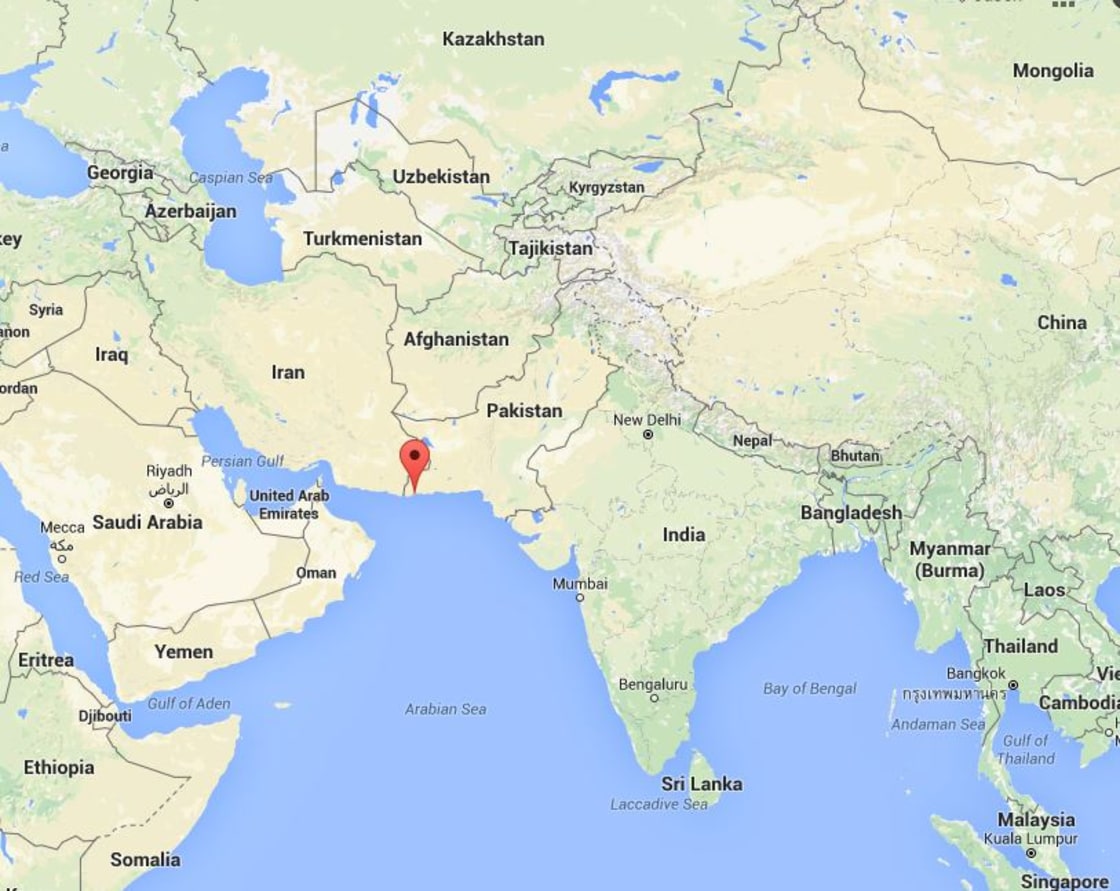As with so many of the Chinese projects the port is in a very strategic location, up against the Iranian border and facing Muscat and Oman across the narrow part of the Arabian Sea leading to the Strait of Hormuz:

From Hakai Magazine, November 23:
A massive port project—part of China’s Belt and Road Initiative—is more military base than port, further disenfranchising people in a region with a history of political tension and violence.
The city of Gwadar in southwestern Pakistan sits between two perfectly curved bays, on an isthmus leading to a hammerhead-shaped peninsula. Perched along the Gulf of Oman, Gwadar was a fishing village for much of its modern history; traditional fishing boats still bob in the aquamarine water, while others rest on the sandy beach that stretches along the coast. Sharp, angular hills and cliffs, carved into straight lines by harsh winds—the city’s name translates as “gateway of the wind”—tower over the sparse vegetation that punctuates the landscape. On the isthmus sits Gwadar’s Old City, where fishermen and their families have lived for generations.
On the peninsula, to the southeast and some distance from the sprawl of the Old City’s dirt tracks, dense housing, and open sewage, sits a newly constructed port complex. With its neat paving and dramatic scale, it looks like an import from another world. And in a way, it is.
Gwadar Port is the highest-profile project in China’s strategic investment in South Asia. This remote coastal outpost—with a population of just 5,000 two decades ago—lies 470 kilometers as the crow flies from Karachi, Pakistan’s economic hub. But—if all goes according to plan—Gwadar will connect western China to key shipping routes in Asia. The Chinese and Pakistani officials pushing the plan forward have promised residents of Gwadar that the port will bring prosperity and development to the city and the surrounding area, which suffers chronic water shortages and electricity outages. But local people are skeptical.
Gwadar is situated in Balochistan, a restive province with a long history of armed insurgency and conflict with the Pakistani state. As a result, the port is militarized and heavily fortified. The surrounding area is riddled with checkpoints, fostering resentment among local people, while foreigners struggle to get visas to visit unless they’re on strictly controlled trips. These actions, ostensibly taken by the Pakistani military to secure the port complex and the Chinese workers building it, only appear to confirm the worst fears of residents: that the economic benefits will go to outsiders, while they are steadily pushed out.
In April 2015, China and Pakistan unveiled the plan for Gwadar as a key plank of the China-Pakistan Economic Corridor (CPEC). This scheme—originally valued at US $46-billion, now estimated to be worth $62-billion, although numbers are hard to pin down—aims to link northern Pakistan and western China to the deepwater seaport at Gwadar, through a 3,200-kilometer network of railways, roads, pipelines, power plants, and fiber-optic cables stretching across Pakistan.....
....MUCH MORE